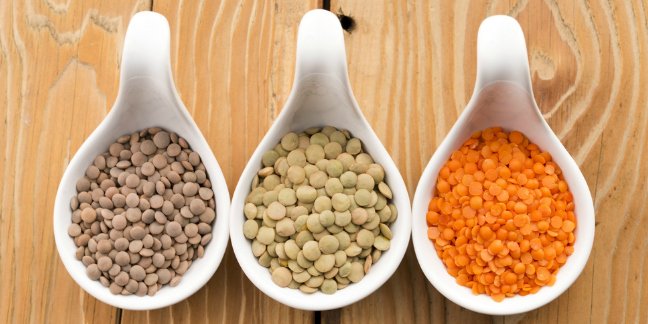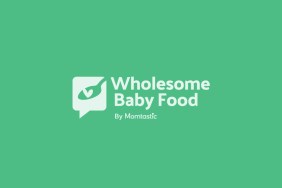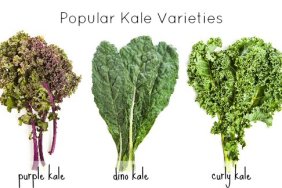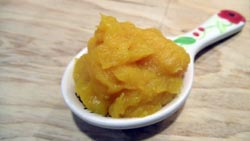Age for Introducing Lentils, Legumes and Dried Beans 8-10 months 
Lentils may be small but they sure do pack a lot of nutritional whallops. Like other beans, lentils are in the legume family and are high in fiber. The fiber content of lentils and other legumes makes they great for helping maintain bowel regularity along with the other benefits of high fiber foods. Lentils contain high amounts of six minerals as well as B-vitamins, and protein.
|
VITAMINS:
Vitamin A – 16 IU Vitamin C – 3 mg Niacin – 2 mg Folate – 358 mcg Thiamin – .3 mg Riboflavin – .14 mg Contains some other vitamins in small amounts |
MINERALS
Potassium – 731 mg Sodium – 12 mg Calcium – 38 mg Phosphorus – 356 mg Magnesium – 71 mg Iron – 6.5 mg Also contains small amounts of selenium, manganese, copper and zinc. |
![]() Visit Lentil Baby Food Recipes page – more Lentil Information & Recipes
Visit Lentil Baby Food Recipes page – more Lentil Information & Recipes
When can I introduce Lentils, Legumes and Dried Beans to my baby?
Lentils and dried beans/legumes are typically recommended for introduction into a baby’s diet between 8-10 months old. Considered a high protein food, a young tummy may not be able to properly digest lentils and other legumes such as kidney beans or navy beans. Lentils and other legumes are often the source and cause of gassiness. With this being said, many parents make lentils a part of baby’s diet between 6-8 months of age. These legumes and bean rank very low on the list of foods that prompt allergic reactions. As always, we recommend that you thoroughly discuss any feeding issues with your pediatrician as generalities may not apply to your child.
Types of Lentils, Legumes and Dried Beans to use for Homemade Baby Food
Lentils and dried beans/legumes come in many shapes, sizes and colors. Here are a few: Red Lentils (Masoor Dal) Orange Lentils Yellow Lentils (Moong Dal, Mung Bean – our favorite.) Kidney Beans Black Eyed Peas Chick Peas Northern Bean Butter Beans (A VERY yummy finger food, you may need to slip off the “skin” after cooking.)
How to Cook and Soak Legumes and Dried Beans
No matter what type of dried bean you are preparing, the cooking instructions are the same. While soaking the beans overnight is not an absolute must (and I often forget to do this), soaking beans will reduce the length time that you have to cook them for. Prior to soaking and cooking, be sure to wash and pick through the beans. To soak the beans, measure the amount of beans you will be using and add them to a lidded jar or plastic container. Pour water (warm or cold) over the beans so that they are completely covered. Close the container and go about your activities. Come back in 6 to 8 hours and your beans are ready to cook. To cook dried beans, use 3 cups of water per 1 cup of beans that have been soaked. If the beans have not been soaked, use 4-5 cups of water. Bring beans and water to a boil in a pot, cover and simmer until the beans are tender. Be sure to check on the water level and never let the water level get below the beans. The beans are done when they are easily squished between your thumb an finger, using very light pressure.
Here are a few yummy and nutritious Lentil and Dried Bean Baby Food Recipes
Lentils or Dried Beans- Basic Preparation Method
Lentils do not need to be presoaked like some legumes do though many people find that soaking them for at least 1 hour helps to make them more tender and “meltable”. Most people also soak dried beans prior to cooking.
You should spread out the lentils or dried beans and check for and remove stones or other debris. This recommendation applies to both packaged as well as bulk lentils and legumes, particularly those you will be feeding to your baby!. After you have inspected the lentils or dried beans, place them in a strainer, and rinse them thoroughly under cool running water.
Directions:
Step 1: Add 3 cups of water to a pot
Step 2: Add 1 cup of lentils or beans
Step 3: Bring to a boil then turn heat down to simmer and cover the pot.
Green lentils usually take 30 minutes to cook, while red lentils tend to cook up faster, about 20 minutes.
Step 4: Cook longer for a more mushy lentil (like dahl) and shorter for more firm lentils (for adding to rice dishes and salads etc.
Step 5: Watch the pot for the texture you wish to have for baby food – add more water as needed.
Tulika’s Dal – Dal Recipe(s) from our visitors
With regards to your question about making the perfect Dal..I have a small steam cooker that I use to make dal for my daughter.
If you don’t have a cooker, you can use a crock pot also (I have a small crock pot). I flavor the dal with a small amount of turmeric and a tiny amount of salt. My daughter LOVES it.
I also add a small amount of rice to it also for added texture and flavor. before feeding it to her I make sure its mashed up nicely. cooking dal in a cooker/crock pot will melt the dal nicely so that there is no choking danger.
Lentils with Chicken & Apples
Prepare Lentils according to package directions or as shown above. Be sure to clean and sort the Lentils to ensure that “garden bits” such as small pebbles are not present.
Add small cubes or dices of cooked chicken and cooked apple chunks to the pot You can add 1/2 apple (cored and diced into tiny bits) to the lentils as they are cooking if you wish.
Alternatively, you can mix in some 100% Natural Applesauce to the Chicken and Lentil mix should you not wish to steam or cook the apples. Blend the mix as needed to create a texture acceptable for your baby.
Black Bean & Sweet Potato Hash
Ingredients:
- 1 large onion
- chopped 3 teaspoons dried thyme leaves
- 3 to 4 tablespoons olive oil
- 1 sweet red pepper chopped (optional)
- 4 cups peeled cubed sweet potatoes (1/2 inch cubes)
- 2 15-ounce cans black beans, drained and rinsed or 4 cups dried black beans that have been cooked
- Pepper
Directions:
In large skillet, saute onion and thyme in oil until onion is tender, about 5 minutes. Add red pepper and sweet potatoes; saute until potatoes begin to soften, about 8 minutes. Stir in beans and cook until potatoes are tender, about 5 minutes. Season to taste with pepper. Serve with Baby Omlettes or as a great finger food “meal” full of protein and Iron. Recipe Adapted from the American Dry Bean Board
Split Pea Soup with Treasures
Ingredients:
- 1 tablespoon olive oil
- 1 white onion
- finely chopped 3 cloves garlic
- pressed 4 small red potatoes
- diced 1 cup peele
- diced carrots
- 1 pound dry green split peas
- 4 cups vegetable broth (no salt – or make your own.)
- 1 (16 ounce) package soft tofu (optional)
- 1 (6 ounce) bag fresh spinach, finely chopped (optional for babies 10 months+)
- 1 tablespoon dried basil or thyme pepper to taste Heat the olive oil in a skillet over medium heat, and saute the onion and garlic until tender.
Directions:
In a large pot, mix the onion mixture, potatoes, carrots, and split peas. Pour in the vegetable broth. Bring to a boil, reduce heat to low, and simmer 1 hour. In a blender or food processor, blend the tofu and spinach until creamy, and mix into the pot. Season with basil, and pepper. Continue cooking 1 hour. If the soup becomes too thick, add water as needed.
Baby’s Chili
Ingredients:
- 1 tablespoon olive oil
- 1 small onion
- finely chopped 2 stalks of celery
- finely chopped 2 cups vegetable broth (no salt – or make your own.)
- 1 cup cooked kidney beans
- 1/2 cup ground turkey or beef – cooked
- pinch of pepper, garlic powder, turmeric, cumin
Directions:
In a large pot saute the onion and celery in the olive oil until tender. Add the broth and cooked kidney beans. Bring to a boil, add the meat and then reduce heat to low. Simmer 1 hour. Serve as is or mash/puree if your baby is not accustomed to chunks and texture. Use a potato masher for babies who enjoy texture.
Foods Good to Mix With Lentils & Legumes
- Apples
- Peaches
- Grapes
- Green
- Beans
- Dried Beans
- White Potato
- Sweet Potato
- Peas Summer Squash – zucchini or yellow/crooked necked
- Winter Squash – butternut, acorn etc.
- Brown Rice
- Lentils
- Chicken Beef
- Pork Tofu
![]() Remember, always consult with your pediatrician regarding introducing solid foods to your baby and specifically discuss any foods that may pose allergy risks for your baby.
Remember, always consult with your pediatrician regarding introducing solid foods to your baby and specifically discuss any foods that may pose allergy risks for your baby.
![]() This site complies with the HONcode standard for trustworthy health information: verify here.
This site complies with the HONcode standard for trustworthy health information: verify here.



